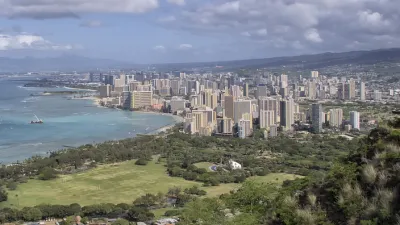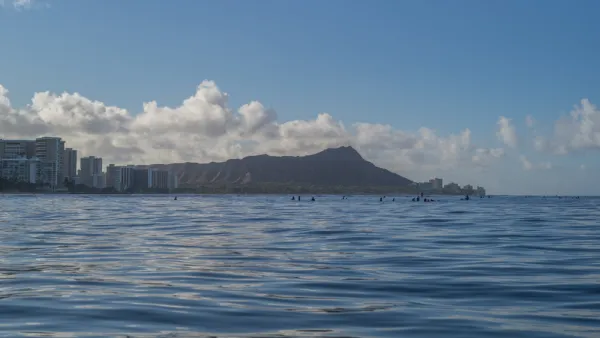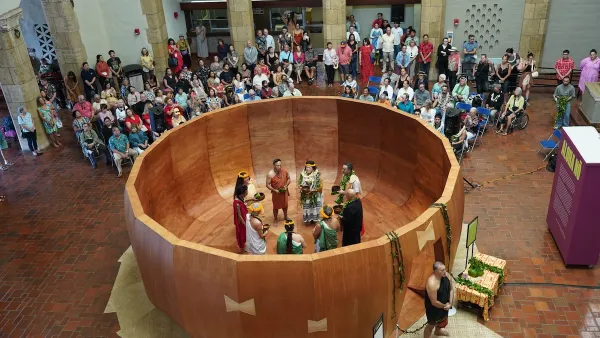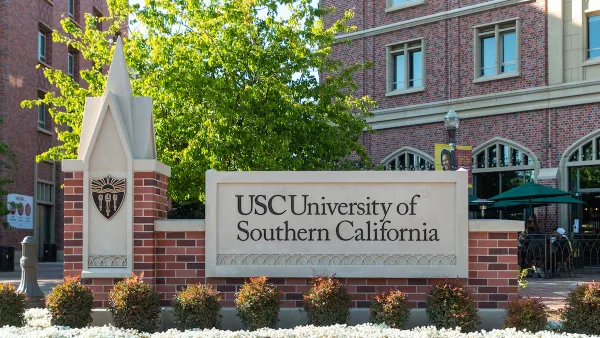Mayors and civic leaders from across the Hawaiian islands signed a commitment to target 100 percent renewable ground transportation by 2045, both public and private.

Symbolically gathering on the Polynesian voyaging canoe Hōkūleʻa, leaders from Honolulu, Maui, the island of Hawai'i, and Kaua'i signed a commitment "to transform Hawaiʻi’s public and private ground transportation to 100 percent renewable fuel sources by 2045," writes Rob Kinslow.
Signees included Honolulu Mayor Kirk Caldwell, Maui County Mayor Alan Arakawa, Kaua'i County Mayor Bernard P. Carvalho Jr. and Hawai'i County Managing Director Wil Okabe. "In their specific proclamations the City and County of Honolulu, the County of Maui, and the County of Kauaʻi pledged to lead the way by transitioning all of their fleet vehicles to 100 percent renewable power by 2035, and the County of Hawaiʻi plans to establish a goal toward the same end."
The commitments follow a 2015 state law that requires 100 percent of Hawaii's electricity to be generated by renewable sources by 2045. They are also "in alignment with the state of Hawai‘i’s recent commitment to the goals of the Paris Climate Agreement that seeks to reduce greenhouse gas emissions and keep global warming below 1.5 degrees Celsius."
FULL STORY: Mayors commit to 100% renewable ground transportation by 2045

National Parks Layoffs Will Cause Communities to Lose Billions
Thousands of essential park workers were laid off this week, just before the busy spring break season.

Retro-silient?: America’s First “Eco-burb,” The Woodlands Turns 50
A master-planned community north of Houston offers lessons on green infrastructure and resilient design, but falls short of its founder’s lofty affordability and walkability goals.

Delivering for America Plan Will Downgrade Mail Service in at Least 49.5 Percent of Zip Codes
Republican and Democrat lawmakers criticize the plan for its disproportionate negative impact on rural communities.

Test News Post 1
This is a summary

Test News Headline 46
Test for the image on the front page.

Balancing Bombs and Butterflies: How the National Guard Protects a Rare Species
The National Guard at Fort Indiantown Gap uses GIS technology and land management strategies to balance military training with conservation efforts, ensuring the survival of the rare eastern regal fritillary butterfly.
Urban Design for Planners 1: Software Tools
This six-course series explores essential urban design concepts using open source software and equips planners with the tools they need to participate fully in the urban design process.
Planning for Universal Design
Learn the tools for implementing Universal Design in planning regulations.
EMC Planning Group, Inc.
Planetizen
Planetizen
Mpact (formerly Rail~Volution)
Great Falls Development Authority, Inc.
HUDs Office of Policy Development and Research
NYU Wagner Graduate School of Public Service





























